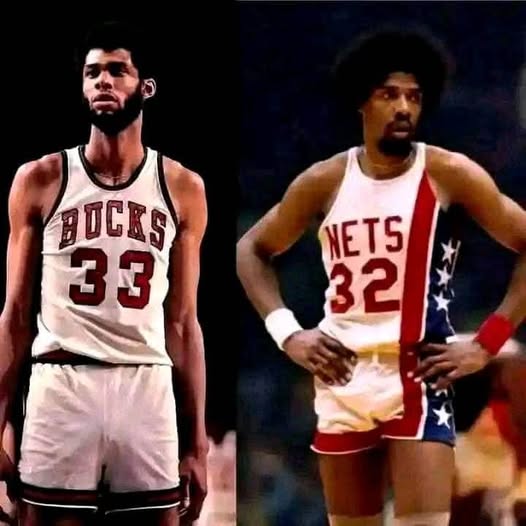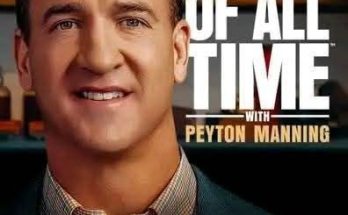The 1972 Draft Twist: How Milwaukee’s Pick of Julius Erving Could Have Built a Legendary Trio — But Ended Up Costing the Hawks Fines Instead.
The story of the 1972 NBA Draft is one filled with intrigue, what-ifs, and a twist that could have dramatically altered the course of basketball history. It centers around the Milwaukee Bucks’ surprising selection of Julius Erving, a player destined to become one of the most electrifying talents the sport has ever seen. This decision, while bold and full of promise, ultimately led not to the formation of a legendary trio, but instead to unexpected consequences for another franchise — the Atlanta Hawks, who ended up facing fines in the fallout. This tale serves as a fascinating look into the complexities of NBA drafts, team strategies, and the ripple effects a single decision can have across the league.
In the early 1970s, the Milwaukee Bucks were a team on the rise. Having secured the services of a young Lew Alcindor (who later became Kareem Abdul-Jabbar) a few years earlier, and building around him with a strong supporting cast including Oscar Robertson, the Bucks were considered a championship-caliber team. However, the franchise’s management was always looking to strengthen the roster further and make bold moves to solidify their status as contenders. When the 1972 draft approached, many expected Milwaukee to focus on players who could immediately complement their existing stars.
Enter Julius Erving — a player whose talents were already well known in the American Basketball Association (ABA) but who was still a mystery in the NBA. Erving, often called “Dr. J,” was a revolutionary figure in basketball with his athleticism, creativity, and style of play that captivated fans. Despite his status in the ABA, the NBA teams were cautious about investing high draft picks on players who were committed to the rival league. Nonetheless, Milwaukee saw the opportunity and made the surprising choice to draft Erving, hoping to bring his dynamic game to the NBA and pair him with their core stars.
The potential impact of adding Erving to the Bucks’ roster was immense. Imagine the chemistry of a team that included Kareem Abdul-Jabbar’s dominant inside presence, Oscar Robertson’s veteran leadership and playmaking, and Julius Erving’s explosive scoring and flair on the wing. This trio could have been one of the most formidable in basketball history, blending skill, power, and excitement. The thought of such a lineup sparked the imagination of fans and analysts alike, as it promised a new era of Bucks basketball that could challenge any opponent.
However, the reality was far more complicated. Julius Erving was deeply entrenched in the ABA, and contractually committed to continuing his career there for the foreseeable future. The NBA, at the time, was locked in a tense rivalry with the ABA, and players crossing between leagues were rare and often fraught with legal and financial challenges. Milwaukee’s gamble on Erving did not pan out in the way they had hoped, as the player remained with his ABA team, the Virginia Squires, for several more seasons.
Meanwhile, the draft itself stirred controversy involving other teams, most notably the Atlanta Hawks. The Hawks had interests that intersected awkwardly with the Bucks’ decision, and as the draft unfolded, certain actions by the Hawks led to sanctions. The exact details involved violations of draft protocols and tampering accusations, which the NBA took seriously to maintain the integrity of the league’s player selection process. As a result, the Hawks were fined, a move that sent a clear message to all teams about the importance of following league rules and the consequences of overstepping boundaries.
This twist in the story added another layer of drama to an already complex situation. While the Bucks’ pick of Erving promised a legendary trio that never materialized, the repercussions were felt by the Hawks, who found themselves penalized amidst the shuffle. The fines served as a cautionary tale for teams navigating the competitive and often cutthroat landscape of professional basketball.
Looking back, the 1972 draft serves as a fascinating case study in risk, reward, and the unpredictability of sports management. Milwaukee’s vision to draft Julius Erving showed foresight and ambition, recognizing a player who could revolutionize their team’s identity. Yet, the realities of contracts, league rivalries, and player loyalties made the dream unattainable. The Hawks’ penalties, while unfortunate for that franchise, underscored the importance of maintaining fairness and order in the draft system.
In the years that followed, Julius Erving would eventually make his mark in the NBA, but with other teams and under different circumstances. His legacy as one of the game’s all-time greats was cemented through perseverance and extraordinary talent, rather than through the Bucks’ initial hopes. Meanwhile, the Milwaukee Bucks continued to build around Kareem and other stars, achieving success in their own right, though the legendary trio envisioned in 1972 remained an intriguing “what could have been.”
The events of that draft remind us that in professional sports, the path to greatness is often winding and unpredictable. Decisions made in a single draft room can reverberate for decades, shaping team fortunes and league history in ways no one can fully predict. The Milwaukee Bucks’ 1972 draft choice stands as a testament to bold ambition and the complexities of basketball’s evolution, while the Hawks’ fines highlight the delicate balance between competition and compliance that teams must navigate.
Ultimately, this chapter in NBA history is more than just a story about a player or a draft pick. It’s about vision and risk-taking, the challenges of competing leagues, and the intricate dance of strategy and rules that define professional sports. It illustrates how one bold move can open doors to greatness or close them just as quickly, and how every franchise’s actions contribute to the larger narrative of the game we love. The 1972 draft twist remains a compelling reminder of what might have been, and the unexpected ways in which basketball history is written.



